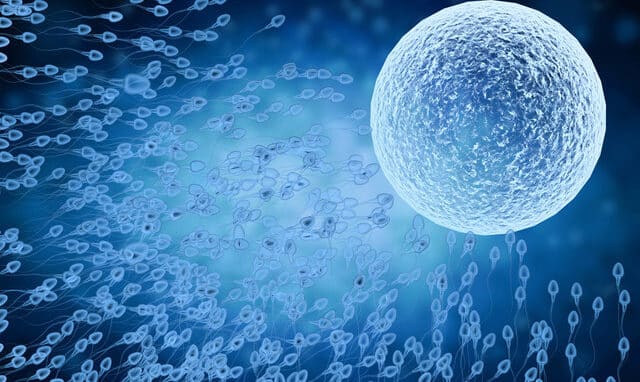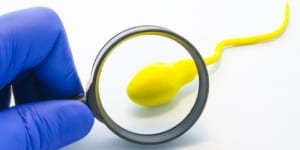During sperm production, an enormous amount of DNA has to be packed into a very small space without breaking anything. Certain proteins around which the DNA thread is wrapped – the protamines – play a central role in this process. A study by the University of Bonn provides insights into this important mechanism. The results have been published in the journal PLoS Genetics.
Spermatogenesis
If you are once again complaining about your suitcase being far too small just before going on vacation, you should take your cue from human sperm cells. They face an almost impossible task in their production. They have to pack 23 DNA threads with a total length of one meter into a head with a diameter of only three thousandths of a millimeter. The filigree threads must neither become tangled into an inextricable knot nor break.
We often sit on the suitcase to close it. The body uses a similar trick during spermatogenesis. Normally, DNA forms a comparatively loose ball. In sperm cells, however, it is extremely compressed. “If the DNA were to take up as much space as a watermelon under normal circumstances, the sperm would only be the size of a tennis ball,” says Prof. Dr. Hubert Schorle from the Institute of Pathology at the University Hospital Bonn.
DNA Has to be Compressed Enormously
Biologists call this process hypercondensation. In their loose state, the DNA threads are wrapped around numerous spherical protein molecules, the histones. In this state, they resemble 23 tiny strings of pearls. During hypercondensation, the histones are first exchanged for transition proteins. In a further step, these are replaced by so-called protamines. Due to their chemical composition, the protamines exert a very strong attraction on the DNA. The thread therefore wraps around the protamine in very tight and dense loops.
“Most mammals seem to produce only one type of protamine, PRM1,” explains Dr. Lena Arévalo, postdoctoral researcher in Schorle’s group. “In humans, but also in rodents like mice, it’s different – they have a second type, PRM2.” What exactly this second protamine is needed for was previously unknown. However, it was known that some parts of it are gradually cut off during sperm development.
And according to the study, it is precisely these truncated parts that appear to be of enormous importance. If mice only produce a shortened PRM2 molecule that lacks the truncated sections, they are infertile. The removal of transition proteins during hypercondensation is impaired. In addition, the condensation appears to occur too quickly, causing the DNA strands to break.
Hope for Therapies Against Male Infertility
It is possible that a defective protamine 2 can also lead to infertility in males of our own species. “There are only a few research groups analyzing the role of protamines in hypercondensation,” says Schorle, who is also a member of the Transdisciplinary Research Area (TRA) ‘Life and Health’ at the University of Bonn. “So far, we are the only laboratory in the world that has succeeded in generating and breeding both PRM1- and PRM2-deficient mouse lines, which we can now use to investigate the role of these proteins in spermatogenesis.” In the medium term, this could also lead to new therapies for male infertility.





